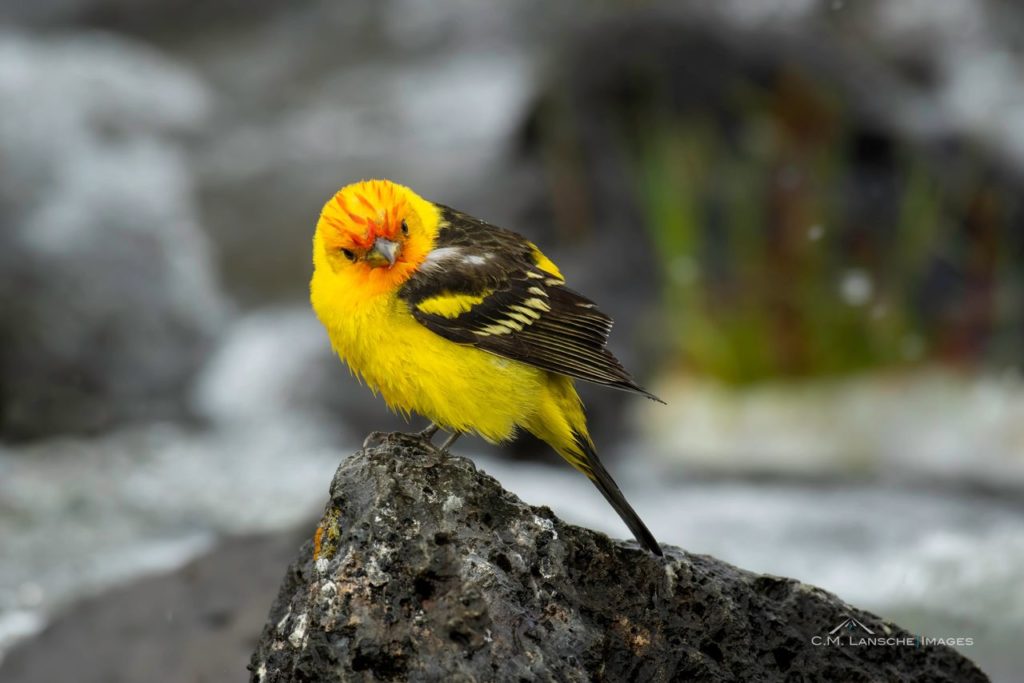The first flashes of vibrant yellow and red in the lodgepole canopy signaled the arrival of summer in Island Park. Each June, just ahead of the solstice, migrating western tanagers appear in the conifer forests of the Greater Yellowstone ecosystem. This year was no exception and a couple of weeks ago we began to see the unmistakable markings of the male western tanager. At first it was a few evasive sightings high in the forest canopy. Yet by mid-June, these sharply beautiful birds appeared to be everywhere in the Caldera in numbers I’ve not seen before.

Late one evening last week I noticed perhaps 20 western tanagers catching insects along the banks of the upper Henry’s Fork of the Snake River. I decided to sit still with my camera in the riparian grasses and brush camera in hopes of capturing a few images of these photogenic travelers who spend winters as far south as Nicaragua. It wasn’t long before several preoccupied bug-hunting tanagers began to pluck insects from the plants and rocks, moving into telephoto range. Then to my astonishment one colorful male moved to within a foot of my leg before hopping onto my boot, curiously staring into my eyes. A couple of days after this close-up experience the tanagers seemed to vanish, perhaps moving to cooler northern breeding areas.While most red birds owe their redness to a variety of plant pigments known as carotenoids, the Western Tanager gets its scarlet head feathers from a rare pigment called rhodoxanthin. Unable to make this substance in their own bodies, Western Tanagers probably obtain it from insects in their diet. While the males are unmistakably yellow, black, and red, the female western tanager has a soft greenish hue. This species ranges farther north than any other tanager, breeding northward to a latitude of 60 degrees—into Canada’s Northwest Territories. In the northernmost reaches of their breeding range, western tanagers may spend as little as two months before migrating south.
Island Park resident Charlie Lansche is a landscape and wildlife photographer who is equally at home with songbirds as he is with grizzlies.
